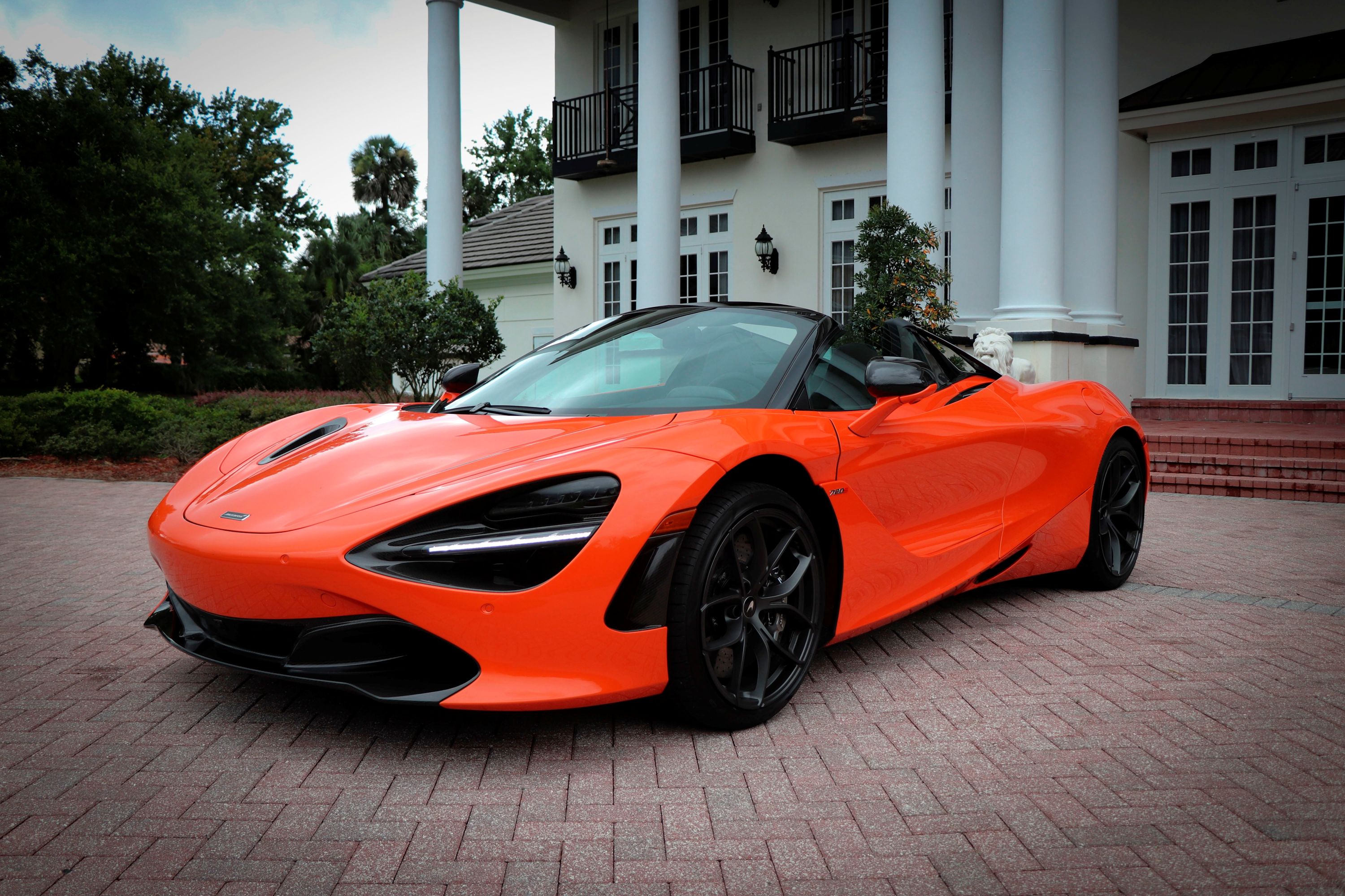
Last month, McLaren teased it would be revealing a convertible version of its 720S Super Series car. Before this, we even saw leaked patent photos of what the convertible 720S would look like. Now, McLaren has officially pulled the wraps off the 720S Spider and it is everything we had hoped for - the beauty of the 720S, now with even more drama and some top-down fun. If you've been holding out on buying a 720S because you simply prefer having a convertible supercar, now you have no excuse not to pull the trigger and trade in your Ferrari 488 Spider.
Straight away, the 720S hasn't sacrificed any of its beauty after losing its roof. It hasn't lost much in terms of rigidity either. Like all McLaren's, the 720S Spider's carbon fiber Monocage II-S is incredibly stiff, so there was no need for any additional strengthening. McLaren did have to revise part of the windshield to accommodate the central latching mechanism for the roof, though other than a few minor tweaks the Spider remains very similar to the coupe. Overall, the Spider weighs just 108 pounds (4%) more than the coupe and 15 pounds less than the 650S Coupe.
Like previous McLaren Spider models, the 720S features unique glazed flying buttresses to aid with rear visibility and enhance the visual drama. The 720S Coupe has been praised for its incredible level of rear visibility and the Spider will be no different. McLaren says the design of these new buttresses provides a 12% improvement in over-the-shoulder visibility for drivers.
As standard, the roof itself comes as a single piece of carbon fiber, though it can also be ordered with a piece of glass that can tint or become transparent at the press of a button. The mechanism to raise and lower the roof is now electric instead of hydraulic and can be raised or lowered in just 11 seconds (six seconds quicker than the 650S Spider) at speeds of up to 31 mph. McLaren says this new mechanism is now the fastest in the supercar class.
McLaren also hasn't sacrificed much in terms of performance with the 720S Spider. Power still comes from a 4.0-liter twin-turbo V8 producing 710 horsepower and 568 lb-ft torque going out through a seven-speed dual-clutch and providing a power-to-weight ratio of 533 hp-per-ton (dry weight). The acceleration figures are properly blistering for a convertible. 0-60 mph is covered in just 2.8 seconds and 0-124 mph takes just 7.9 seconds.
This means the 720S Spider is only 0.1 seconds slower than the Coupe. Likewise, the quarter-mile is dealt with in 10.4 seconds, which is also only 0.1 seconds off the pace of the Coupe. McLaren even says the Spider will match the Coupe's 212 mph top speed with the roof up and even with the roof down, the car can still travel up to 202 mph. If there are any downsides to buying the Spider, we fail to see them.
If you already loved the interior of the Coupe, you won't have any problems with the Spider. Almost everything remains the same, though there are some subtle differences underneath the car. McLaren has designed new 10-spoke, forged alloy wheels specifically for the Spider. These are wrapped in Pirelli P Zero tires, though a more track-focus P Zero Corsa tire is also available, as are winter tires.
The new 720S Spider is already available to order starting at $315,000 for the standard model, with deliveries to start in March 2019. Like the Coupe, the Spider will also offer Performance and Luxury trims above the standard model. McLaren has also added two new colors, Belize Blue and Aztec Gold, and brought back one heritage color, Supernova Silver, taking the number of available color options to 23. We're sure there will also be plenty of MSO color options if the standard 23 just don't feel special enough.
